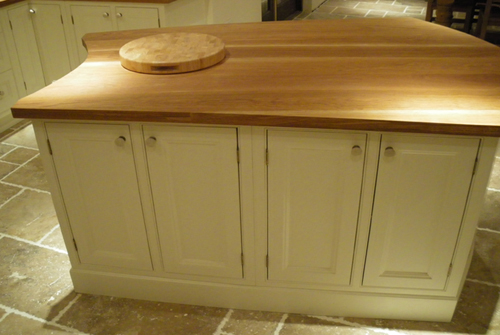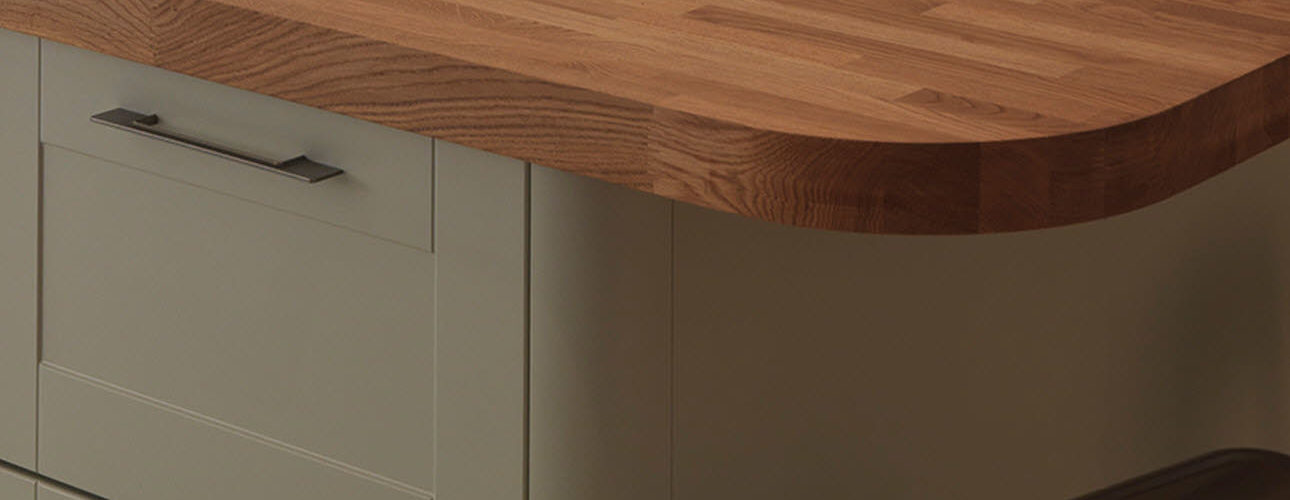
Wood Worktop
Wood worktops in the kitchen are an attractive and cost effective option. These counter tops, made of hardwoods, are less expensive than the commonly seen granite or marble worktops and more resilient and attractive than laminate. However, there are some basic care requirements to make sure you get the most out of your surfaces.
Hard wood worktops come in a variety of forms, colors, and grain patterns making them fit many different decorating schemes. The type of wood you choose, from dark, rich oak to the much lighter beech or maple, will have a large impact on the final look. Regardless of coloration, however, any wood counter-tops will add greater warmth and personality to a room.
As far as practicality goes, wood is an excellent option. Oiled wood is easier to keep clean than one might expect and is fairly durable, provided basic precautions are taken to protect it. Naturally, a cutting board should be used rather than the counter surface, and hot items should be placed on a hot pad so as not to scorch or discolor the surface. Wood counter tops also have the added benefit of being very hygienic. The fibers in cut wood will release a natural antiseptic that kills a number of the germs that commonly live on worktops, reducing the risk of food poisoning and the need to use harsh chemicals to fight bacteria. In fact, harsh cleaners such as bleach can damage wood surfaces and should not be used.
Wood is also a very easy material to work with. It is much softer than stone worktops and thus can easily be cut into any shape necessary for the design of the worktop. Due to this fact, solid wood worktops are one of the best options for people who wish to remodel their own kitchen,. In addition, wood is much lighter than stone or glass, meaning there is no need to add extra reinforcements to the cupboards below to bear the weight.
There are a few special considerations that need to be taken into account when it comes to wooden worktops. These surfaces can last the lifetime of the owner if they are properly cared for, but wood is more vulnerable than harder surface materials, such as granite or marble. Wood can be gouged, scratched, stained, or scorched if it is used roughly. In addition, there is some regular maintenance that must be performed. Generally worktops made of wood must either be lacquered once a year or oiled once a month in order to prevent warping and damage. It is important to use mineral oil, rather than an animal or vegetable based oil to prevent bacteria growth. Lacquering may be the less time consuming option, but regular oiling will make the wood more durable and resistant to stains and scorching. On the positive side, wood that is regularly oiled will improve its look over time, developing a deeper and richer sheen as the years go by.
Minor repairs are relatively easy on wood surfaces. If the damage is light, simply sanding the piece down to underneath the damage and resealing it will be enough. At times, simply refinishing the surface can be enough to refresh the worktop and conceal minor stains. As with a hardwood floor, any liquids should always be wiped up quickly.
The type of wood and the quality of the grain will both have an impact on the price of installing a wooden worktop. More common woods, such as oak, will cost less than richer and more difficult to grow woods such as mahogany. On average, this type of worktop will cost anywhere from $20 to $130 per square foot, with installation adding approximately another 20% to the final cost. If you are capable of performing the installation yourself, you will definitely save some money, but be sure you are up to the task before you begin the project. If you intend to perform the installation yourself, be sure to properly seal the wood. Without this step, humidity and central heating in the home will warp your worktop.
A solid wood worktop requires some care and maintenance, but it is more cost effective than many other options and still gives your kitchen a warm and classic look.







